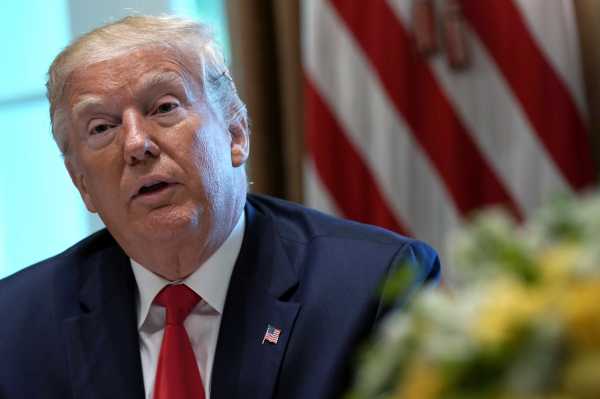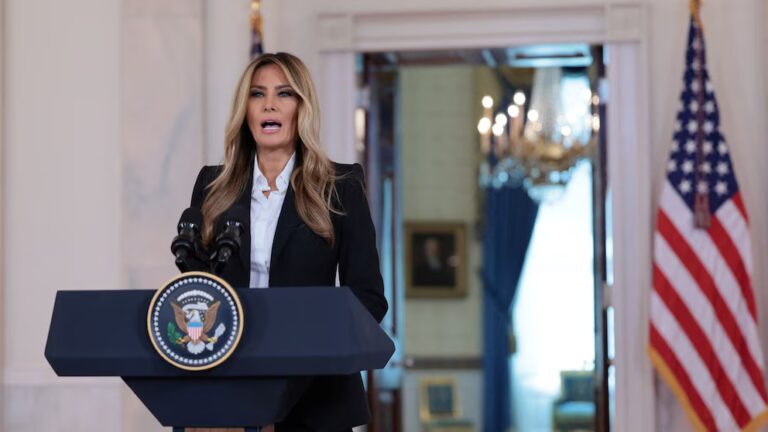
President Trump long ago gave up on his promise to deliver “health care for everybody,” but his administration does have something else in mind: health reimbursement arrangements.
The Trump administration finalized some new regulations late last week for those tax-preferred accounts. In short, employers can pay money into their employees’ health reimbursement accounts, and then the workers can take that money and use it to buy insurance on the individual market. Companies can alternatively pay into a different kind of HRA that their workers can then use to pay directly for health care or for a “short-term limited duration” insurance plan that does not have to comply with Obamacare’s rules about preexisting conditions.
The regulations do put some important standards in place. For example, employers can’t pick and choose individual workers to provide HRA money to, and they cannot offer the same employees both a traditional employer-sponsored insurance plan and an HRA. But health care policy experts still expect a negative effect on the individual markets set up by the Affordable Care Act.
That’s because employers in states where individual coverage is currently available relatively cheaply will have a stronger incentive, particularly if they have a sicker workforce, to offer HRAs. They can spend less on an HRA than they would on offering insurance plans. But if those companies funnel their sicker workers into the ACA markets, then premiums for the Obamacare coverage are going to increase.
“Potential disadvantages, as always with insurance, involve the potential for gaming,” Katherine Hempstead, senior policy adviser at the Robert Wood Johnson Foundation, told me. “If employers are able to use this to dump expensive employees in the individual market, they would save money but the individual market could become unaffordable.”
I exchanged emails with Hempstead about the Trump administration’s new HRA regulations. Our conversation is below, edited for clarity and length.
Dylan Scott
What the heck is an HRA? Is this like an HSA, a health savings account, something people might already be familiar with?
Katherine Hempstead
HRA stands for health reimbursement arrangement, and it is one of a number of tax-preferred health benefits. HRAs are employer-funded and reimburse employees for making certain health expenses, which under this new rule would now include premium payments in the individual market. HSAs are savings accounts to which both employers and individuals can contribute.
Dylan Scott
So what are the potential advantages for employers and their workers?
Katherine Hempstead
Employers could make contributions to employees’ health insurance without actually having to administer a group health plan. Employees could gain more choice and potentially get a plan that better suited their preferences.
The individual market as a whole could improve if there was more enrollment coming from group, and that could result in more options and/or better affordability.
Dylan Scott
What are the potential disadvantages?
Katherine Hempstead
Potential disadvantages, as always with insurance, involve the potential for gaming.
If employers are able to use this to dump expensive employees in the individual market, they would save money, but the individual market could become more expensive. Employees may or may not like the individual market options as much as they liked their group plan, and if they don’t, their employers will hear about it.
Dylan Scott
Why would the Trump administration be interested in HRAs? How does it fit with their broader approach to health care?
Katherine Hempstead
In some ways it is incongruous because the administration has taken a number of actions and advocated for others which most people would construe as being designed to undermine the ACA in general and the individual market in particular. Yet the success of this new rule depends on a well-functioning individual market. If you can get past that inconsistency, this probably appeals to a desire to increase flexibility for small employers, who will probably be most interested in this opportunity, at least initially.
Dylan Scott
What are the implications for the health insurance market?
Katherine Hempstead
Looking at the medium to longer run, the only way the individual market will really grow is if there is migration from group. So in that sense, this is potentially a big deal. But even under the best-case scenario, it will be a multi-year process. The timeline to 2020 is extremely tight, and implementation will be very challenging in the short run. Employers are cautious with benefits, so I wouldn’t expect a huge acceleration of this right out of the gate. But the longer-term implications could be significant, because many people like the idea of a direct-to-consumer market for health insurance, and directionally, this is the kind of thing that needs to happen to bring that to scale.
This story appears in VoxCare, a newsletter from Vox on the latest twists and turns in America’s health care debate. Sign up to get VoxCare in your inbox along with more health care stats and news.
vox-mark
Sign up for the
newsletter
VoxCare
Email (required)
Subscribe
By signing up, you agree to our Privacy Policy and European users agree to the data transfer policy.
For more newsletters, check out our newsletters page.
Join the conversation
Are you interested in more discussions around health care policy? Join our Facebook community for conversation and updates.
Sourse: vox.com






